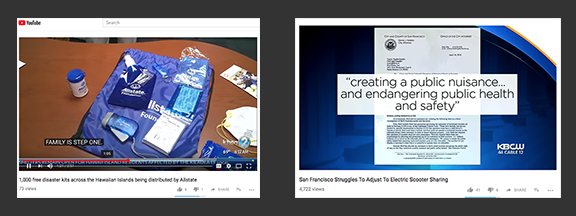WSJ: Partners in Blood
Monday, May 21st, 2018Few organizations in Silicon Valley implode like Theranos has. [There also was Solyndra.] But Theranos is a good case example for the innovation process for the YCISL program. This entry is based on the article “Partners in Blood” by John Carreyrou published in the Saturday/Sunday May 19-20 issue of the WSJ (Review section).
The article describes ultimately poor leadership skills on the part of two main characters in the Theranos story: Elizabeth Holmes and Ramesh Balwani.
By YCISL measures, they actually did a great job at problem-setting, brainstorming, and elevator pitch. They should also be given credit for product development with regards to setting a very compelling feature list.
However, there are two parts of the innovation leadership process that seem to not have been done according to Silicon Valley standards. One is the testing and readiness step. Alpha and beta testing must have revealed serious problems with what they had developed. Once the product was put in the hands of a real user, QA, QC, LIMS and all other lab protocols should have alerted everyone to problems.
The other step that went awry is prototyping. In YCISL, we emphasize “fail early, fail fast” in the prototype stage but Theranos kept developing a product past prototyping with showstopper failings. Any skilled analytical chemist would not trust data from small sample size due to the amplified issues with the “scientific method” including sampling error, sample contamination, sample preservation, and the conditioning of analytical instrument detectors. What Theranos did is an error usually made (but eventually understood) by first-time science fair students. The real failing here however is the denial of the flaws, and the inability of investors to resist the obvious fib. Fuel to the fire.
The lesson for YCISL is to be disciplined during the prototyping stage and even the testing stage. Be honest with yourself. Be willing to embrace failure and learn from it. Be comfortable starting again – Silicon Valley style.
Follow-on: I decided to re-read Jeff Raskin’s “HOLES IN THE HISTORIES” to remind myself how it only takes one acceptable “authority” to build a consensus resulting in fact but not truth. Theranos’ lie may have started as a small seemingly-manageable one, but one can imagine it getting out of hand once one investor bought in. At some point, people chose not to check primary sources and relied on secondary sources. People bought into the “fact” but took the truth for granted. Raskin also writes on DELIBERATE MISREPRESENTATION and the “reality distortion field” that Steve Jobs is closely associated with. This is a leadership “disease” which has spread widely and we should address by instilling stronger EQ in youth leadership.



 This morning (Tuesday May 1, 2018), Casey Neistat (actually I am finding several of his videos quite relevant to YCISL) posted a
This morning (Tuesday May 1, 2018), Casey Neistat (actually I am finding several of his videos quite relevant to YCISL) posted a